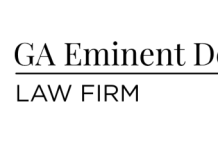The modern business environment presents organizations with an unprecedented volume of compliance requirements that span multiple jurisdictions, industries, and regulatory frameworks. Traditional manual approaches to compliance management have become increasingly inadequate, creating bottlenecks that slow business operations while exposing organizations to significant regulatory risks. Compliance workflow automation emerges as a transformative solution that streamlines regulatory processes and fundamentally reimagines how organizations approach compliance management in the digital age.
Intelligent workflow automation leverages advanced technologies, including artificial intelligence, machine learning, and robotic process automation, to create seamless, efficient compliance processes that operate with minimal human intervention. These systems transform complex, multi-step compliance procedures into streamlined workflows that automatically route tasks, validate information, generate reports, and ensure adherence to regulatory timelines.
The Evolution from Manual to Automated Compliance Processes
Traditional compliance management relies heavily on manual processes that involve multiple stakeholders, extensive documentation, and complex approval chains. These legacy approaches typically require compliance professionals to manually track regulatory deadlines, coordinate with various departments, and ensure that all necessary approvals are obtained within specified timeframes. The manual nature of these processes creates numerous opportunities for delays, errors, and oversights that can result in regulatory violations and associated penalties.
Modern compliance workflow automation addresses these challenges by creating standardized, repeatable processes that automatically handle routine compliance tasks while providing intelligent oversight and exception handling. Business leaders are increasingly recognizing that mastering regulatory compliance requires strategic approaches that go beyond traditional manual methods. These systems can simultaneously manage multiple compliance streams, ensuring that nothing falls through the cracks while maintaining detailed audit trails that demonstrate regulatory adherence to auditors and regulators.
Core Components of Automated Compliance Workflows
At the foundation of effective compliance workflow automation lies sophisticated task orchestration that automatically routes compliance activities to appropriate stakeholders based on predefined rules and criteria. These systems understand the interdependencies between different compliance tasks and ensure that activities proceed in the correct sequence while maintaining visibility into overall progress and potential bottlenecks.
Automated compliance workflows incorporate comprehensive document management capabilities that ensure all compliance-related documentation remains current, accessible, and properly versioned. These systems automatically generate required forms, populate fields with relevant data from integrated business systems, and maintain complete revision histories that support regulatory audit requirements.
Compliance deadlines represent critical milestones that cannot be missed without risking regulatory violations and associated penalties. Automated workflow systems continuously monitor all compliance deadlines and provide early warning notifications to ensure that activities remain on track. These systems can escalate issues through management hierarchies when deadlines are at risk, ensuring that potential problems receive appropriate attention before they become regulatory violations.
Implementation Strategies for Maximum Effectiveness
Successful implementation of compliance workflow automation begins with comprehensive mapping and standardization of existing compliance processes. Organizations must thoroughly document current workflows, identify inefficiencies and redundancies, and design optimized processes that leverage automation capabilities while maintaining necessary human oversight and decision-making authority.
Compliance workflow automation achieves maximum effectiveness when integrated with existing business systems, including enterprise resource planning platforms, customer relationship management systems, and financial reporting tools. These integrations eliminate data silos and ensure that compliance workflows have access to accurate, up-to-date information from across the organization.
The transition to automated compliance workflows requires comprehensive training programs that help stakeholders understand new processes and technologies while addressing concerns about changing roles and responsibilities. Organizations must also establish clear governance structures that define roles and responsibilities within automated workflows while ensuring that appropriate human oversight remains in place for critical decisions.
Technology Integration and Advanced Capabilities
Modern compliance workflow automation platforms incorporate artificial intelligence and machine learning capabilities that enable systems to learn from historical patterns and continuously improve performance over time. These intelligent capabilities can identify potential compliance risks before they materialize, recommend process improvements, and adapt workflows based on changing regulatory requirements or business conditions.
Robotic process automation complements workflow automation by handling routine, repetitive tasks that consume significant human resources without adding strategic value. RPA bots can automatically complete forms, extract data from documents, update databases, and perform other routine activities while workflow automation orchestrates these activities within broader compliance processes.
Advanced compliance workflow automation platforms provide real-time monitoring and analytics capabilities that give organizations unprecedented visibility into their compliance operations. These systems generate comprehensive dashboards that display key performance indicators, identify potential bottlenecks, and provide insights into overall compliance health.
Measuring Success and Continuous Improvement
Effective measurement of compliance workflow automation requires sophisticated metrics that capture both operational efficiency and regulatory effectiveness. Organizations should track metrics such as average task completion times, error rates, deadline adherence percentages, and resource utilization levels to assess the operational impact of automation initiatives.
Leading organizations are adopting new perspectives on governance, risk, and compliance best practices that emphasize the strategic value of automated compliance frameworks. Automated compliance workflows generate vast amounts of performance data that can be analyzed to identify optimization opportunities and process improvements. Organizations should regularly review workflow performance data to identify bottlenecks, inefficiencies, and areas where additional automation might provide value. Continuous improvement processes should also incorporate feedback from stakeholders who interact with automated workflows to ensure that systems remain user-friendly and effective.
The complexity of international compliance requirements creates particular challenges for organizations operating across multiple jurisdictions. For instance, companies may need to navigate complex requirements when achieving GDPR compliance in the US while simultaneously managing other regulatory obligations. Workflow automation proves invaluable in managing these overlapping requirements by automatically coordinating related activities and ensuring that all applicable regulations receive appropriate attention.
Future Developments and Strategic Considerations
The future of compliance workflow automation promises even more sophisticated capabilities as emerging technologies continue to mature and integrate with existing automation platforms. Natural language processing will enable systems to automatically interpret new regulatory requirements and suggest workflow modifications, while blockchain technology may provide immutable audit trails that enhance regulatory compliance demonstrations.
Predictive analytics capabilities will become increasingly sophisticated, enabling organizations to anticipate regulatory changes and proactively adjust their compliance strategies. These predictive capabilities will transform compliance from a reactive function into a strategic advantage that enables organizations to stay ahead of regulatory developments rather than simply responding to them.
Integration and Scalability
Integration with external regulatory databases and monitoring services will provide automated workflows with real-time access to regulatory updates and changes, enabling systems to automatically adjust processes and requirements as regulations evolve. This dynamic capability will ensure that compliance workflows remain current and effective even as regulatory landscapes continue to change.
Organizations implementing compliance workflow automation today position themselves at the forefront of regulatory technology adoption while building capabilities that will become increasingly important as compliance requirements continue to grow in complexity and scope. The investment in automation technology pays dividends through reduced operational costs, improved regulatory outcomes, and enhanced organizational agility.
Transforming Compliance into a Strategic Advantage
Compliance workflow automation represents more than just operational efficiency – it fundamentally transforms how organizations approach regulatory management by creating systems that are both more effective and more strategic than traditional manual approaches. By automating routine compliance tasks, organizations free their compliance professionals to focus on strategic analysis, risk assessment, and business advisory activities that add genuine value to organizational objectives.
The implementation of intelligent workflow automation requires careful planning, stakeholder engagement, and ongoing optimization. However, the benefits – including reduced compliance costs, improved regulatory outcomes, enhanced audit readiness, and increased organizational agility – justify the investment for organizations serious about transforming compliance into a competitive advantage. As regulatory environments continue to evolve and become more complex, automated compliance workflows will transition from operational improvements to strategic necessities for maintaining regulatory excellence while supporting business growth and innovation.








